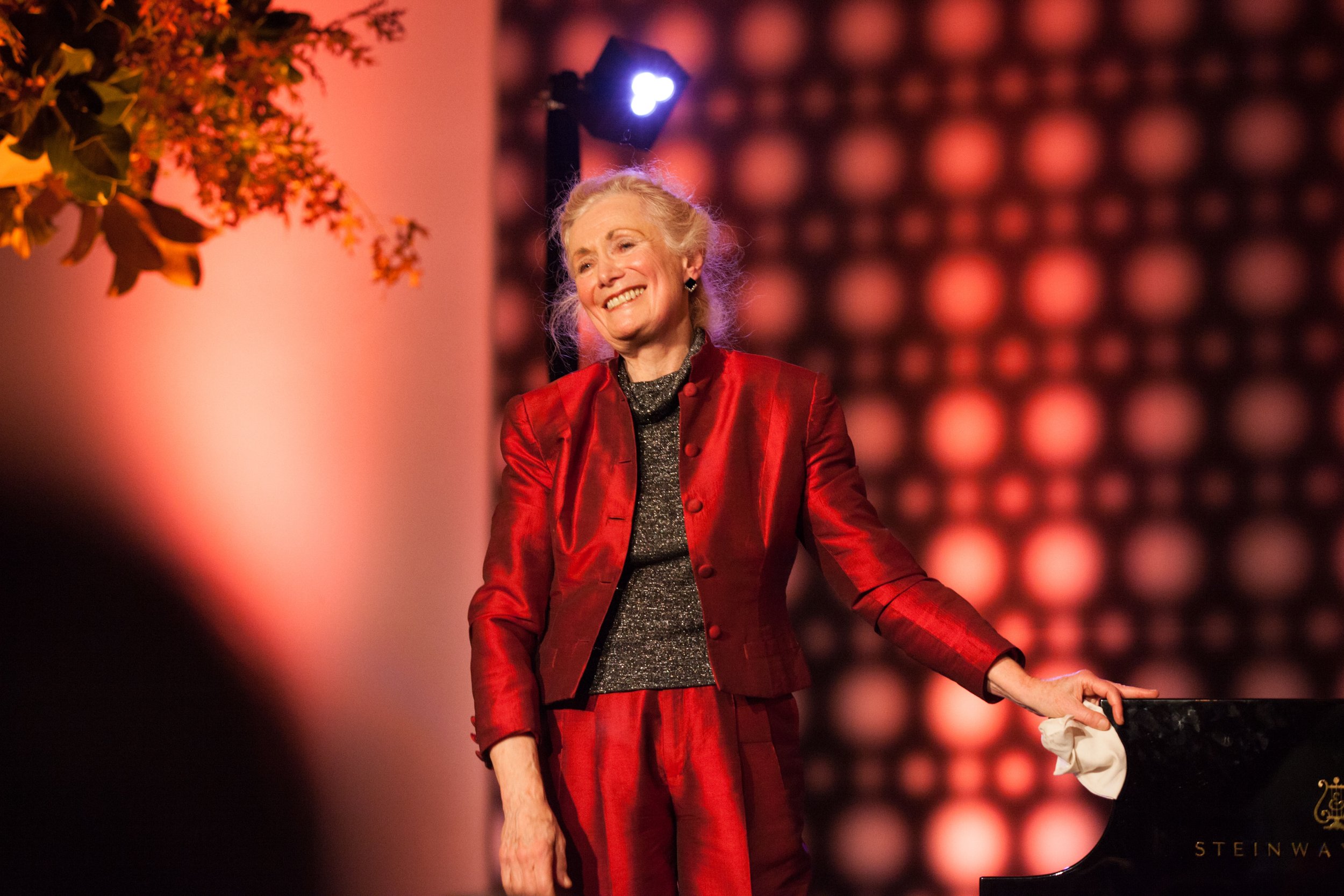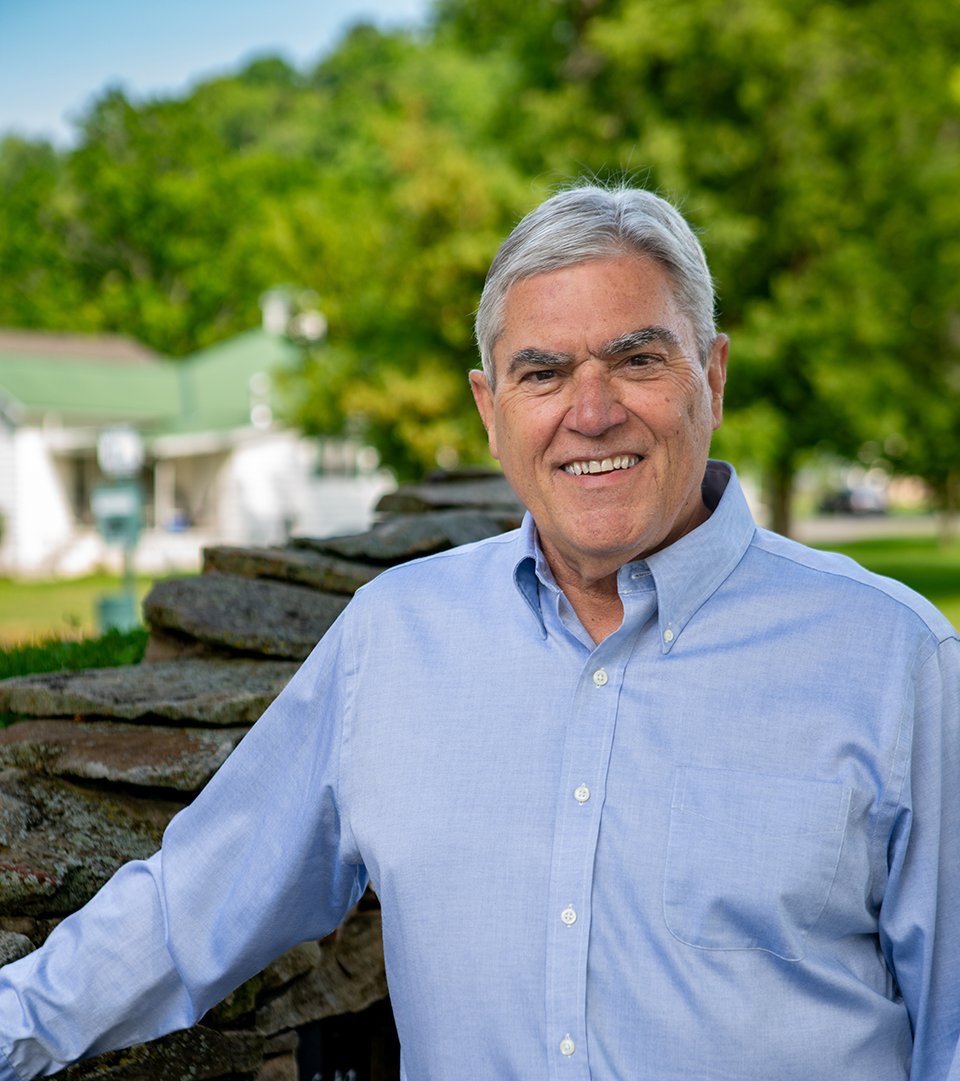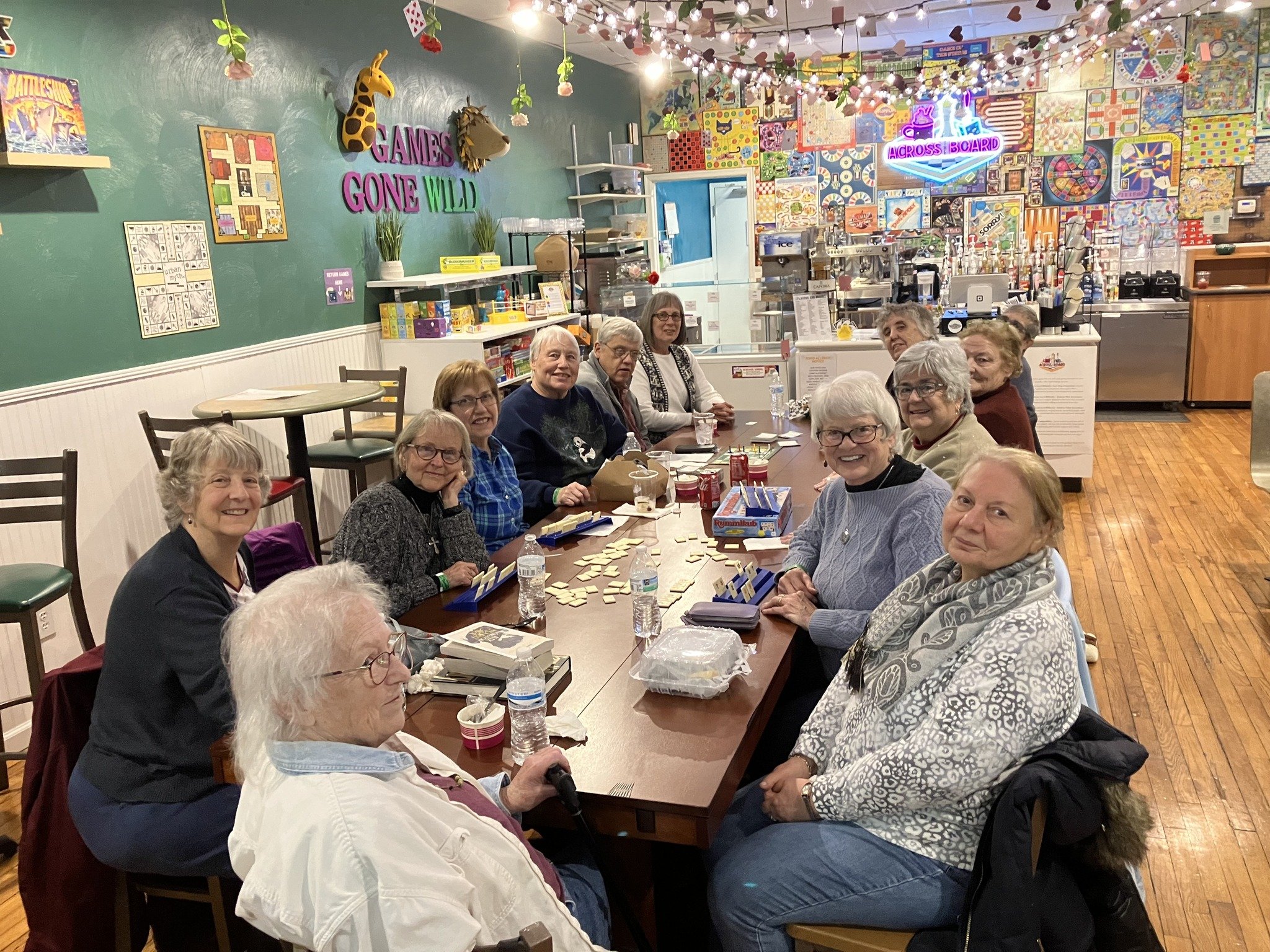Davis Stuart Turns 100

By GREG JOHNSON
Davis-Stuart has been around a long time.
Before there was a Great Depression, even before many rural communities had electricity, Davis-Stuart was serving young West Virginians. To put it locally, before West Virginia had a State Fair, before the General Lewis Inn opened its doors, before Camp Alleghany had campers, or before Dorothy Draper splashed the Greenbrier with her whimsical colors, Davis-Stuart was providing a home away from home for children and teenagers who weren’t able to live with their own families. Since 1919 thousands of young West Virginians have passed through the agency’s doors. For some it has been a turning point, for others a waystation.
Davis-Stuart celebrates its 100th birthday in October. Despite its long history, the question most commonly asked of the people who work there is, “What is Davis-Stuart?” This is often followed by, “What happens to your residents when they leave?” Simple questions with not-so-simple answers.
Originally the property was a 574-acre farm owned by George and Mary Davis, whose family traced its ownership back to the 1700’s. The couple deeded their farm to the Presbytery of the Virginias for the establishment of an orphanage. Today, thanks to Charles Dickens and the musical Annie, the word orphanage conjures images of urchins and bowls of gruel. The truth is these homes-away-from-home served a variety of children pretty well. Many of the young “orphans” had families - they simply couldn’t live with them because of family problems.
In its early decades Davis-Stuart operated in ways that now seem quaint. The boys rose at five in the morning to milk dairy cows. The girls cooked and sewed. Church attendance was mandatory. Electricity didn’t reach the campus until 1933. For forty years there was only one telephone. Smoking wasn’t universally frowned on like it is now – sometimes the kids would bum cigarettes and matches from the staff. Residents often stayed for years before going off to jobs, college or the military.
Times changed in the 1960’s. Orphanages were replaced by adoptive homes, foster homes, group homes and residential treatment centers. Davis-Stuart, which had been serving children as young as 6 for nearly fifty years, became a treatment center for teenagers who weren’t able to live with their own families, either temporarily or permanently.
West Virginia classifies facilities for youth based on the residents’ needs. Level One facilities are community group homes, where residents have demonstrated the ability to live in a neighborhood setting with some moderate adult supervision and support – attending public school, holding part-time jobs, earning their driver’s licenses, and so on. Level Two facilities serve youth with more pronounced needs. They often have their own schools because many of their students are behind academically and need help catching up. They employ therapists whose role is to help the residents work through their emotional issues. Level Three facilities serve young people with even greater needs, and often less self-control, who require a higher level of security. Level Four facilities are detention centers for those who are adjudicated delinquent and demonstrate little or no self-control. Davis-Stuart operates a Level Two program on its main campus in Lewisburg and Level One group homes in Greenbrier and Mercer Counties.
Residents come to Davis-Stuart for many reasons. Some are victims of abuse or neglect. Others are chronic truants, often behind in school. Still others may have had legal entanglements that weren’t serious enough to merit detention, but were serious enough to merit removing them from home for a period of time. Many arrive confused, angry and homesick. Some find themselves in this situation through no fault of their own, but because of their parents’ issues. It’s Davis-Stuart’s challenge to help them through these difficult times in their lives.
“Since 1919 thousands of young West Virginians have passed through the agency’s doors. For some it has been a turning point, for others a waystation. ”
The campus has its own school, run by the state, with teachers who are state employees. The campus also includes residential cottages, a chapel, a gym, an outdoor pool, an amphitheater, a beef farm, a horse stable, and, thanks to the Hugh I. Shott Foundation, a new dining hall that opened in August.
Today the average young person’s stay is 6-9 months; some stay for shorter periods, some longer, before returning home if possible. Some go off to college with financial support from the state and Davis-Stuart. Jobs and the military are still options, as they have always been.
Davis-Stuart is a private nonprofit corporation. Because of its Presbyterian roots the program is considered a ministry of the Synod of the Trinity, formerly the Synod of West Virginia. It enjoys support from many Presbyterian congregations, ministry groups and individuals, and its Board of Directors is typically comprised of Presbyterians from West Virginia and Virginia.
Society has changed a lot in the past 100 years, but the Davis’ 574-acre farm is still serving the young people of West Virginia in the spirit that it was given. Over 5000 children and teenagers have come to the campus and group homes in the past century, and just about every week new ones arrive.
(L to R) Nancy Copeland, Bruce Robertson, Stephanie Williams and Mark Spangler
In honor of its Centennial we thought it would be interesting to get some of Davis-Stuart’s past and present leaders together to share a few memories and opinions. It was a freewheeling, thought-provoking session.
Bruce Robertson was the agency’s Executive Director from 1974 to 1999. Mark Spangler, who worked as a counselor from 1993-1999, assumed the Executive Director’s role when Bruce retired, and he served until 2017. Stephanie Williams, who came to the agency in 2006 and was its Human Resources Director, became the current Executive Director in 2018. Executive Assistant Nancy Copeland came to Davis-Stuart in 1961 and has worked for the agency a remarkable 58 years. Universally respected and beloved, Nancy is Davis-Stuart’s living memory.
GVQ: Let’s start with the fun stuff. What were some of your more memorable experiences?
Bruce: Most of the things I remember are the adventures I had with the kids. That includes taking them to the ocean, going to Washington (we won’t dwell on the boy we lost who was returned to the hotel by two Secret Service agents), teaching them to sail, exploring caves, chasing snakes, and laying out in the meadow under the stars and watching the satellites. I probably shouldn’t share this particular story, but I remember when 3 girls left the campus on a winter day. When we found them, they said they’d built a fire in a neighbor’s barn to keep warm. I found the barn with smoke still coming from it and a circle of hay burning. I won’t explain exactly how I put the fire out, but I credit my bladder with saving our neighbor’s barn, not to mention the agency’s reputation.
GVQ: Okay, Mark, let’s see you top that one.
Mark: Bruce’s story proves that the key to good leadership is improvising. My fondest memories are raising my own family at Davis-Stuart, and the interactions my children had with the residents. But I’ll share a story about one summer, when it was hot and humid and we were all antsy and getting on each other’s nerves. I went into the school with a Super Soaker and some water guns and started blasting everyone and creating absolute havoc. It was a nice pattern disruption. We were letting kids be kids. We do such important work with treatment and education that sometimes we forget to stop and just have fun.
GVQ: Stephanie, you probably haven’t been in the job long enough to have fun.
Stephanie: Luckily, we’ve been able to continue to offer our teenagers activities and trips. We just took them to ACE Adventures in Fayette County, and kayaking at Sherwood Lake. We had 3 residents show horses at the State Fair. One ended up with champion and another with reserve champion. These kinds of things are fun for everyone.
GVQ: Did anything really prepare you for the Executive Director’s job?
Bruce: When I started at Davis-Stuart, I didn’t know anything. I had two mentors. Nancy was one of them. She was here for 20 years before I arrived. She was a cornucopia of information.
Nancy: If I didn’t know the answer, I made it up.
Bruce: Yes, but you did it convincingly. You had a chair in your office and it was my therapy chair.
Mark: If you come to Davis-Stuart thinking you know how to run it, you most assuredly don’t. What really prepares you is recognizing that you can’t do it by yourself. You have to find people you trust and give them permission to tell you when you’re wrong.
Nancy: I still remember Bruce’s first day. He came in and he sat down on the floor and asked, “Do we have any money?” I told him we didn’t, we just had a pile of bills. He looked at me and said, “Then I guess I’d better get on the ball and raise some.”
Bruce: We’ve always had a lot of flexibility because we’re a private agency. We can address needs when we see them. We’ve had kids who left us without a place to stay or without any furniture. I would scour the campus and load up a van with odds and ends and deliver them to wherever they were so they could get started. We’ve always done more than what’s expected or required.
Mark: I remember a girl who couldn’t go home for Christmas because her family’s electricity was cut off and there wasn’t any food. We paid their electric bill and took the girl home for Christmas with a van full of groceries and presents for her brothers and sisters. She told us she felt like Santa Claus, bringing Christmas to her family.
Nancy: I remember writing a check to pay for the funeral of the father of one of our residents.
Mark: We try to do what feels right and makes sense. When our kids go off to college, they need a lot of things. Because we’re a private agency we can go to a church or the community or a local foundation and ask for help.
GVQ: What were - and in your case, Stephanie, what are - some of your greatest challenges?
Bruce: We never seemed to have enough money. We sometimes used bequests to pay for things that absolutely had to be done. I felt badly because, ideally, you want to put bequests in savings, but we didn’t have any choice if we wanted to keep the doors open.
Mark: The State’s system of care has evolved through the years in an attempt to meet the needs of children and families. We’ve seen the trend in healthcare move to a managed care model. This trend has finally reached child welfare. It’s a system that focuses on pathology instead of wellness, which is the antithesis of Davis-Stuart’s mission and vision. The challenge is finding a way to continue to be relevant and maintain integrity within that model. You want to continue to reward the kids for their progress. Instead the agency is facing a model where there are potentially more resources available if the children are exhibiting pathology and less if they are adapting well.
Stephanie: If you’re asking about the challenges, we have a $5.3 million annual budget we have to meet, 107 employees and a big physical plant.
Mark: The aging physical plant is a challenge, but the pristine rural setting here in the Greenbrier Valley is one of the agency’s most therapeutic aspects, especially compared to more urban centers where the children deal with more distraction.
Stephanie: Things are changing. We don’t have any idea what our program will look like even 9 months from now. There are things like the federal government’s Family First Prevention Services Act that will impact us, but we’re not sure how. Everyone agrees kids would be better if they could stay in their homes with community-based services, but no one seems to know what those services should be or who’s going to provide them.
GVQ: Serving everyone at home sounds like a nice idea until you stop and think about it. Some kids have drug-addicted or mentally ill parents who are so caught up in their own problems they barely notice what their children are doing. How much cooperation and follow-through can you realistically expect from them? And what about teenagers with substance abuse issues? Are they better off if they’re left in the places where they’re buying and selling drugs?
Stephanie: Exactly. They’re supposed to receive mandated “services”, but in many West Virginia communities there aren’t any services to be had. There are too many unknowns. It’s hard for us to prepare for the future when we don’t have any idea what it’s going to look like. I’m dealing with a lot of layers - the cottages, the campus, the community, the state, the federal government - and trying to balance it all with my own family life. But I don’t like being bored, and this definitely isn’t a boring job!
Bruce: The Davis-Stuart you’ve inherited is a world apart from the one I inherited.
Stephanie: I wish I had your world! Our goal is to preserve all the good things you and Mark and Nancy remember while we guide Davis-Stuart into the future.
GVQ: Welcome to the next 100 years.
FOR MORE COVERAGE, PICK UP OUR FALL 2019 ISSUE!





